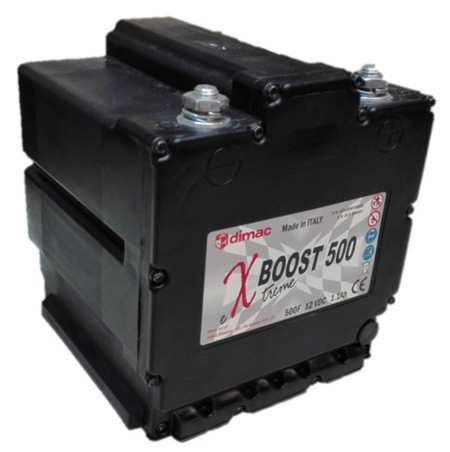How to make your super car go faster!
January 13, 2017

Have you ever thought how you would improve the performance of a Lamborghini? Spend a few moments and think about it now. I bet none of you said, "sup...
Have you ever thought how you would improve the performance of a Lamborghini? Spend a few moments and think about it now.
I bet none of you said, “super capacitors!”
It’s simple, really. One of the key requirements of anything that goes fast is weight. The lighter you are the quicker you can be accelerated and decelerated (Newton’s F=ma). One of the items that weighs a lot in a car is the lead-acid battery. Super capacitors offer the automotive electrical system engineer the ability to reduce the weight of the battery.
The way it works is simple. The output of the battery is dominated by the need to start the car. The cranking current driving the starter motor is far more than the usual current in and out of the battery. If you have super capacitors in parallel with the battery, then all of the cranking current is supplied from the super capacitors and the steady current is supplied by the battery. The battery can be smaller, weight is reduced, and your Lamborghini goes faster.
The advantages don‘t end there:
- Lead is polluting. Because the battery is smaller with super capacitors, the amount of lead introduced into the environment is less thereby less.
- Battery life is extended. Without super capacitors, the cranking current is supplied by the lead acid battery and the temperature rises due to the internal I2R of the battery. These thermal cycles stress the battery and contribute to battery failures. Super capacitors significantly reduce the thermal stresses of the battery.
- Super capacitors are very reliable. They can accommodate 1 million engine starts.
- The car will start even with a poorly performing battery. So long as the battery can trickle enough charge into the super capacitors, they will deliver the high cranking current successfully.
There are other applications of super capacitors that are similar. Anything that needs short intervals of high power can be better served with super capacitors.
- Wind turbines achieve safe states by adjusting blade pitch in the event of a power failure on the grid. Super capacitors can be used to provide the power for the pitch adjustment to ensure an orderly system shutdown.
- Hybrid vehicles need to deliver large currents quickly. It is possible to redesign a system so that half of the battery pack is replaced with super capacitors. Peak currents are supplied by super capacitors and the overall battery pack is probably 30-40 percent lighter.
- Diesel generators work best at an optimum speed and power output. In an application such as a forklift truck, the diesel generator feeds a DC bus backed up by super capacitors. The short heavy demands are satisfied by the super capacitors and the generator is able to work at optimum efficiencies. A savings of up to 60 percent in the amount of diesel fuel consumed is possible.
- An elevator system is often fed with a three-phase power supply. If super capacitors are used it is possible to supply the peak power required from the super capacitors and drive the system with only one phase. This reduces installation cost.
Designing systems that use high-power super capacitors is not as easy as it first appears. A super capacitor is not just a large capacitor. Characterisation of the super capacitor is required to provide a suitable model, and modelling needs to take into account charge/discharge currents and the requirement to balance the cells. To achieve the greatest energy savings, the characteristics of a super capacitor need to be matched with the demands of the system.
DIMAC RED S.p.A has achieved expertise in super capacitors after many years of involvement in a variety of different projects, spanning the fields of industrial, automotive, and transportation, with one recent use case being the company’s start/stop system for buses and cars. For more on super capacitors and improving operational efficiency, visit their website.
Bostin Technology
www.bostintechnology.com





